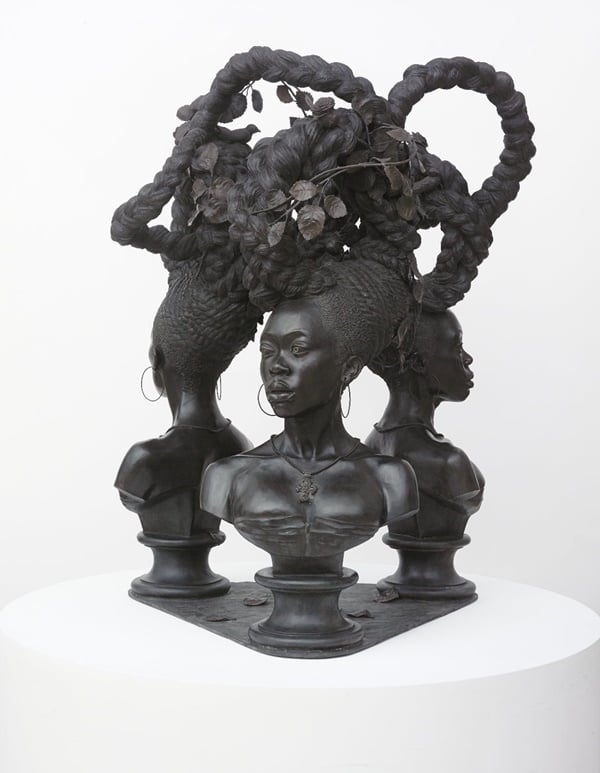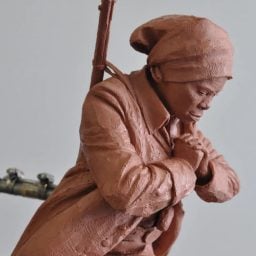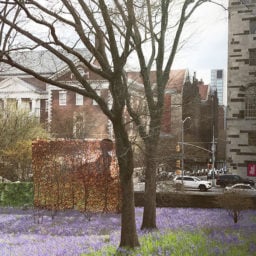A quartet of prominent black artists are in the running to create a new public monument to replace the statue of J. Marion Sims, the 19-century physician whose groundbreaking gynecology research involved brutal experimentation, without anesthesia, on unwilling black women.
The public has until the end of the week to weigh in on the proposals, from Kehinde Wiley, Simone Leigh, Wangechi Mutu, or Vinnie Bagwell. The city’s Percent for Art program chose the finalists in February and will make a selection at a public panel being held Saturday, October 5, 11 a.m.–3 p.m., at the Museum of the City of New York.
Mutu, Leigh, and Wiley all currently have high-profile public art commissions on view in New York City: Leigh on the Highline Plinth, Mutu on the facade of the Metropolitan Museum of Art, and Wiley at Times Square, with a piece unveiled just this week.
For 124 years, the statue of Sims stood outside the Museum of the City of New York, lionizing Sims’s medical achievements without acknowledging the suffering of the enslaved women who served as his test subjects, most of whose names are lost to history.
Various calls for the statue’s removal were voiced over the years—including by Leigh herself at the Creative Time Summit in 2015. The community group East Harlem Preservation spoke out against the work as early as 2007. Yet despite the support of New York City Council speaker Melissa Mark-Viverito, the New York City Parks Department refused to take the monument down, saying “the city does not remove art for content.”
But in 2017, cities around the country began reevaluating public monuments to the Confederacy, after the deadly white supremacist march in Charlotteville, Virginia. This added fuel to a growing movement calling for the Sims statue to be torn down. That September, mayor Bill de Blasio launched the Mayoral Advisory Commission on City Art, Monuments, and Markers to review potentially problematic public artworks, asking for the public to weigh in about what to do.
Ultimately, the commission decided against removing controversial monuments, opting instead to add plaques providing additional historical context for polarizing figures such as Christopher Columbus. The only exception was Sims: the statue was taken down in April 2018 and moved to the site of Sim’s grave in Brooklyn’s Green-Wood Cemetery.
Here are the four proposals for the new artwork that will be erected on the site.
Kehinde Wiley, Untitled
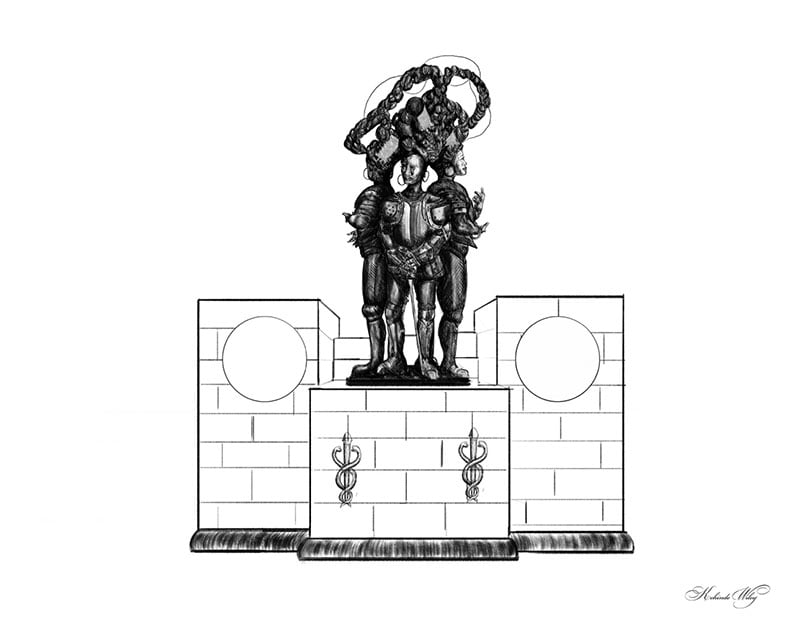
Kehinde Wiley, Untitled (rendering). This is one of four proposals being considered for an artwork to replace the monument to J. Marion Sims, the 19th-century doctor who experimented on slaves. Courtesy of the artist.
Wiley has proposed creating a new version of his 2014 sculpture Bound, which depicts three black women with entwining braids. The new monument would portray the figures as armored doctors, standing arm-in-arm as a sign of their combined empowerment.
“Celebrating the strength and beauty of women, the statue will stand as a symbol of collective empowerment, focusing on the incredible achievements of a community over any single individual,” Wiley in his statement.
Simone Leigh, After Anarcha, Lucy, Betsey, Henrietta, Laure, and Anonymous
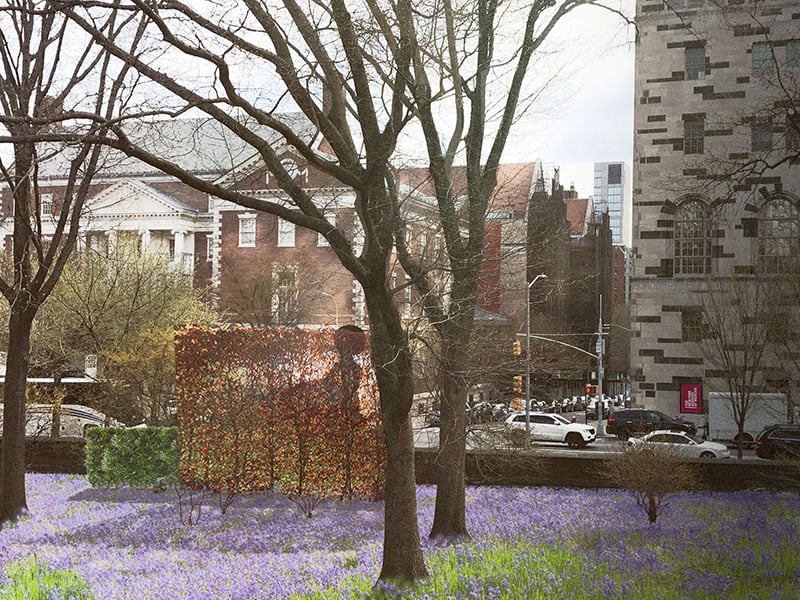
Simone Leigh, After Anarcha, Lucy, Betsey, Henrietta, Laure, and Anonymous (rendering). This is one of four proposals being considered for an artwork to replace the monument to J. Marion Sims, the 19th-century doctor who experimented on slaves. Courtesy of the artist.
Leigh’s title itself is full of history. The names in it reference Henrietta Lacks, the African American woman whose cancer cells were unwillingly immortalized for research; Laure, the model for the black woman in Édouard Manet’s famed painting Olympia; and Anarcha, Lucy, and Betsey, the only Sims subjects whose names were recorded.
“This sculpture simply represents a black figure at rest, a contemporary response to a dearth of representation of black beauty in Western Art,” said Leigh’s artist statement. It calls for surrounding the 18-foot tall bronze work with holly hedges and a bed of blue bells.
Wangechi Mutu, To Raise a Dead Giraffe
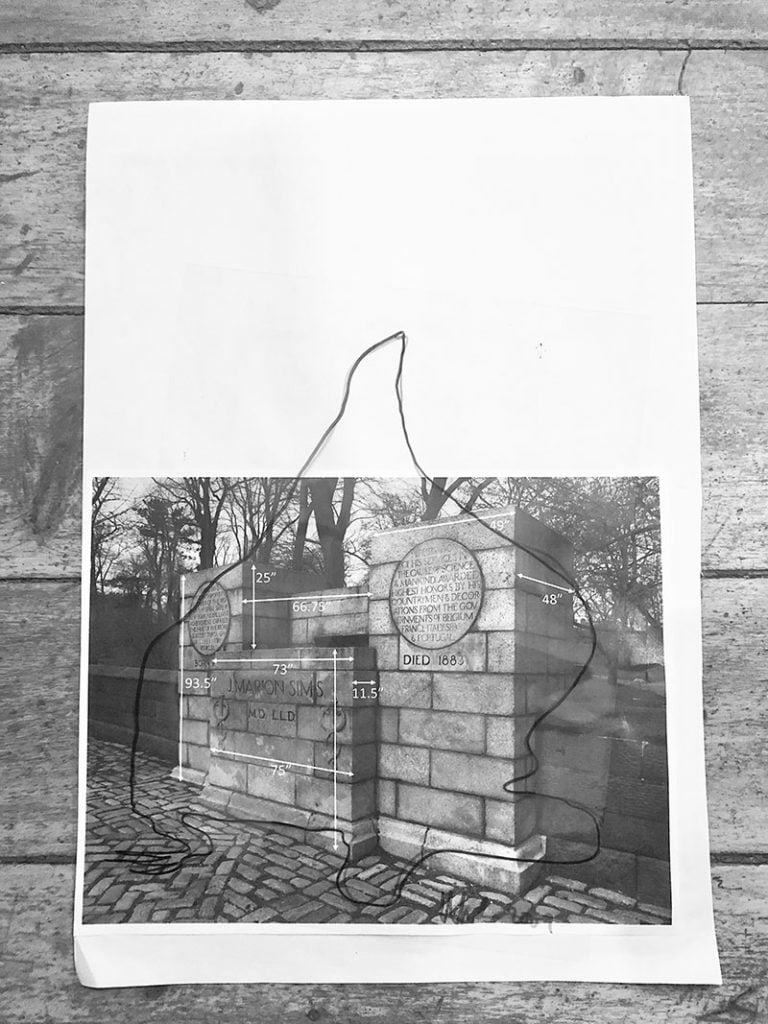
Wangechi Mutu, To Raise a dead Giraffe (rendering). This is one of four proposals being considered for an artwork to replace the monument to J. Marion Sims, the 19th-century doctor who experimented on slaves. Courtesy of the artist.
For her proposal, Mutu envisions a 14-foot-tall bronze sculpture of a person sitting atop a slain animal.
The piece is inspired by photographs, particularly “a recent wave of big trophy hunting by wealthy Americans looking for that feeling of conquering, destroying and consuming what is African,” she explained in her artist’s statement. But the image also references European and American exploration of Africa during the 18th and 19th centuries, when Sims was carrying out his research.
Vinnie Bagwell, Victory Beyond Sims
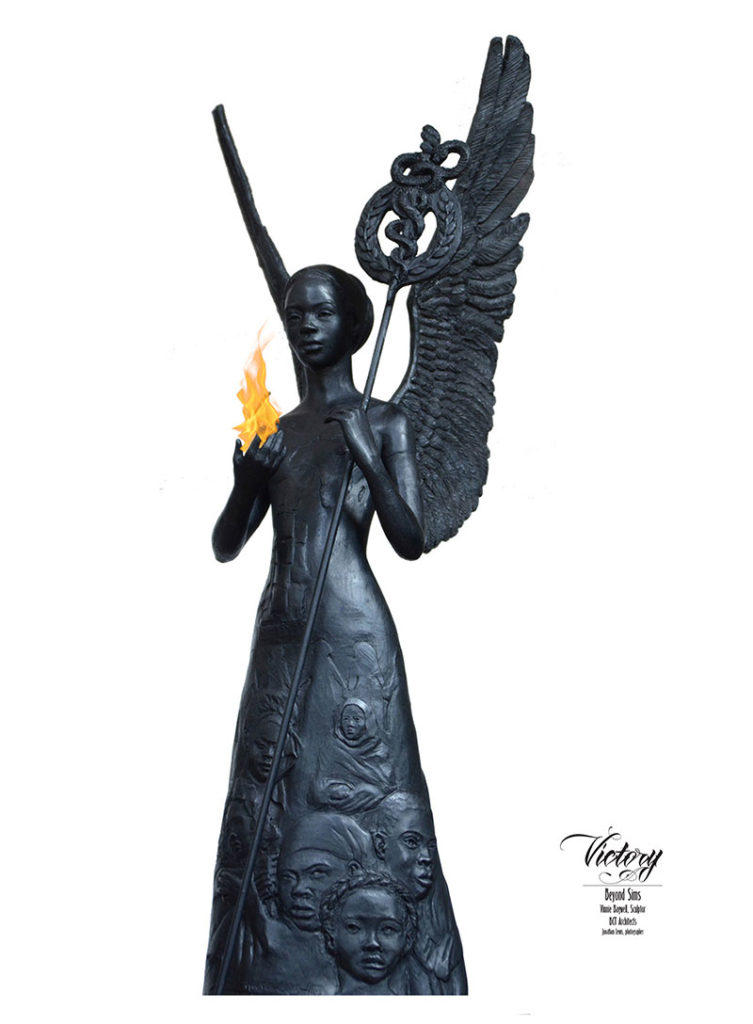
Vinnie Bagwell, Victory Beyond Sims (rendering). This is one of four proposals being considered for an artwork to replace the monument to J. Marion Sims, the 19th-century doctor who experimented on slaves. Courtesy of the artist.
An eternal flame would burn in the hand of Bagwell’s monumental angel, a bronze statue that will stand over 18 feet tall, serving as a progressive beacon.
“Viewers minds shall be quickened and their spirits lifted by her presence,” said Bagwell in her artist’s statement. “Victory’s gaze shall be casted upon fertile ground, envisioning the growth of all who visit this sacred place.”
